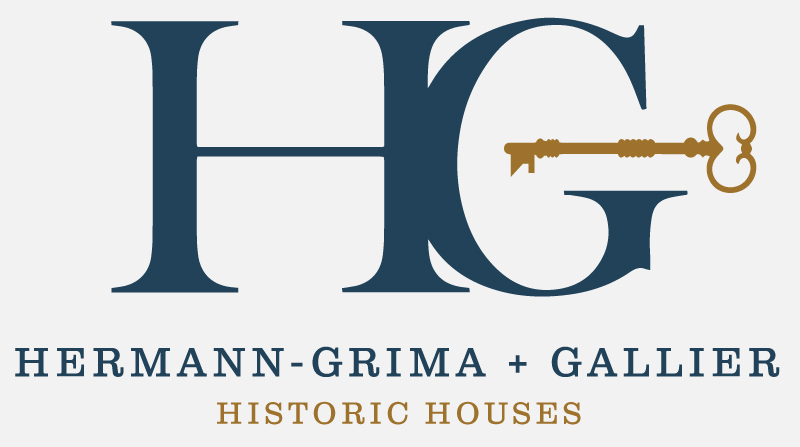Thanksgiving in Nineteenth-Century New Orleans: Preaching the Case For and Against Abolition
By Lauren Goforth
Thanksgiving is a festive occasion in New Orleans today, but in the nineteenth century, Southern states resisted the holiday. Thanksgiving was a “Yankee” holiday in the minds of Southerners, partially because its story originated in 1621 in Plymouth, Massachusetts, marking it as a regional celebration. But even more so, the South saw Thanksgiving as a challenge to the institution of slavery.
Waud, Alfred R. , Artist. Thanksgiving in Union camp, sketched Thursday 28th. United States, 1861. Retrieved from the Library of Congress, https://www.loc.gov/item/2004660226/.
George Washington was the first president to declare a “national day of thanksgiving” in 1789. In subsequent years, it was left up to individual states’ governors to declare a thanksgiving day, and it varied depending on the state, year, and officeholder. By the 1840s, it was celebrated widely across the Northeast and Midwest, with The Daily Picayune in New Orleans describing it as a “good old New England custom” (The Daily Picayune 1846, p. 2).
Thanksgiving began as a religious occasion, particularly among white Protestants, whose leaders preached about being grateful for God’s blessings. Presbyterians in the North were the strongest advocates for a national day of thanksgiving. They were also proponents of a more divisive issue: the abolition of slavery. On thanksgiving days Presbyterian pulpits were often platforms for the abolitionist cause, a time and place to give thanks for one’s citizenship and the freedom to live and worship as one wanted. As a Northern anti-slavery movement grew in the mid-nineteenth century, many churches saw an opportunity to highlight the hypocrisy and moral wrongs of slavery. In turn, many Southerners challenged the Thanksgiving traditions of the North.
Governor Alexandre Mouton declared the first official Thanksgiving in Louisiana on January 15, 1846. While Southerners opposed the abolitionist undertones of the holiday, they appreciated it as a day of public thanksgiving and prayer. The day was mainly celebrated in Presbyterian churches, including services at Poydras Street Church and First Congregational Church led by Reverend Theodore Clapp. Reverend Clapp was born in Easthampton, Massachusetts, and educated at Yale, making him quicker to embrace the holiday than his Louisiana counterparts, however he was vocal in his support for slavery as an institution. First Congregational was nicknamed “the Stranger’s Church” for Clapp’s willingness to welcome people from all denominations and social and economic classes. This hospitality, however, did not extend to enslaved individuals or free people of color.
Reverend Clapp routinely gave Thanksgiving sermons beginning in 1846, with a notable example from 1850. Printed on the front page of the Picayune newspaper as a civil war loomed on the horizon, it preached the “absurdity” of abolition.
Clapp fashioned himself as an unbiased party on the matter of slavery because he was from the North and did not enslave people himself. This, plus his formal biblical studies, led him to believe he was uniquely positioned to give a counterargument to abolition in New Orleans.
Clapp began his 1850 sermon by remembering the Thanksgivings of his childhood up North, painting a picture of a utopia where even the “most impoverished and forlorn enjoyed independence, forgot their sorrows and rose to an equality with the opulent and favored classes of society.” But for Clapp, this equality did not extend to enslaved people. He quickly shifted to condemn the religious abolitionist movement, describing slavery as necessary and endorsed by scripture. The Reverend urged the North to mind their own affairs and considered his community lucky to be saved from their “misguided, fanatical citizens.”
Excerpt from The Daily Picayune, December 22, 1850, A Thanksgiving Sermon Delivered in the First Congregational Church, New Orleans, December 19, 1850. By the Rev. Theodore Clapp.
Thanksgiving was finally made official by proclamation of President Abraham Lincoln in 1863, to be commemorated on the last Thursday of November. In his proclamation, Lincoln, who had issued the Emancipation Proclamation earlier that year, lists many things the nation can be grateful for, including a “continuance of years with large increase of freedom.”
The Hermann, Grima, and Gallier households were all Catholic (although Samuel Hermann practiced Judaism before marrying Emeranthe). Catholic churches in New Orleans did not embrace Thanksgiving observances as quickly as Protestant congregations in the mid-nineteenth century. However, after Lincoln’s 1863 Thanksgiving proclamation, a notice from the office of the Provost Marshall General requested distribution of the proclamation to Clergymen across all parishes and urged churches to open for public worship on the day. A copy of this notice in the archives of the Archdiocese of New Orleans includes a handwritten note bringing the proclamation to the attention of the pastor of St. Bartholomew Church in Algiers (now Holy Name of Mary Catholic Church). This document strongly indicates an intention to begin Catholic observations of Thanksgiving in New Orleans in 1863, even with Lincoln’s endorsement.
Notice from the Office Provost Marshal General, Department of the Gulf, November 16, 1863 (Courtesy of the Archives of the Archdiocese of New Orleans).
Over time, Americans embraced Thanksgiving nationwide and moved it from the church to the home. It stands today as a uniting tradition in America, coming a long way from its nineteenth-century legacy as a divisive issue between North and South.




